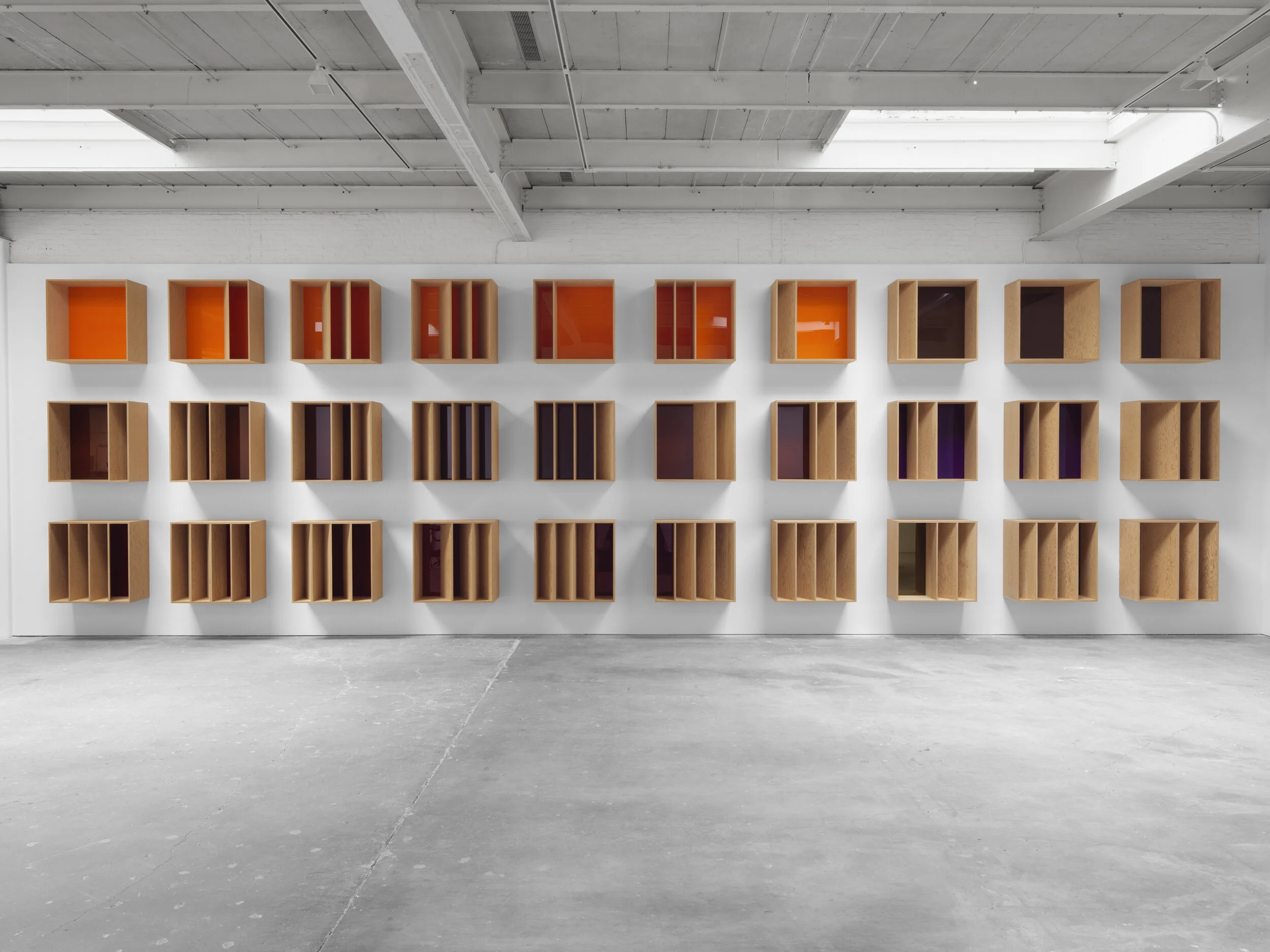FLAVIN JUDD

“[Don’s] writing, design, architecture, and art all come from the same philosophy and is very consistent; a mix of Midwest farmer common sense and empirical Enlightenment philosophy with a heavy dose of skepticism.”
Interview by Dan Golden
A conversation with Flavin Judd, Artistic Director of the Judd Foundation, on the occasion of Donald Judd, Artworks 1970-1994, a survey exhibition at David Zwirner in New York.
DAN GOLDEN I’m interested to hear about how you approached the curation of this exhibition.
FLAVIN JUDD It’s pretty simple. I choose the pieces that I like and then I place them together based on what looks good, what feels right for the works. Some works look better together than others, some need more space. It’s show and work dependent as to why something is where it is. I avoid themes and narratives as they hinder the appreciation of the works, it’s not literary criticism.
DG This exhibition at Zwirner runs concurrent with the retrospective Judd at MoMA. How do you see these two survey exhibitions interacting/relating to each other?
FJ The show at Zwirner isn’t really a survey because the goal wasn’t to demonstrate a timeline, it just happened to turn out that way. MoMA is a true retrospective or survey and so is different. I knew what was going into the MoMA show so didn’t want to have works that would simply duplicate what can be seen there but I didn’t worry about that too much either since every show has it’s own feeling anyway.
DG Can you talk a bit about your childhood? What was it was like growing up in your unique artistic family and environment—first in the building on Spring Street and then later in Marfa, Texas?
FJ It was normal for me and strange for people who were supposedly normal but paid enormous amounts of money to live in shoeboxes in fancy neighborhoods. The surprise is that they still live that way. Growing up in the ‘70s in both Texas and the American renaissance of Soho was great for me even if both were very different from each other. Texas was conservative and like the ‘50s and New York was as radical as it has ever been so far.
DG You and your sister Rainer took over leadership of the Judd Foundation in 1994 after Don passed away. What was it like to have to step into your roles as Artistic Director and President, respectively (while you were both just in your mid-twenties), and how has the responsibility shaped you?
FJ It was just what had to be done. We didn’t have those titles then, we were only “Executors” which only lawyers understood. Since we knew what Don wanted we decided that we had to try, even if we failed later because not trying was already failure. We were already then seeing people who were not interested in trying to do what he wanted and were just after his money so it was up to us to protect Don’s work.
DG Outside of running the foundation, what are you focused on, and where are you based?
FJ I design spaces and occasionally write things and I live in Paris, New York and Texas.
Installation view, Donald Judd, Artworks: 1970 - 1994, David Zwirner, New York, 2020. Courtesy David Zwirner
DG Turning back to Don, would you say that his artwork was an extension of a personal philosophy?
FJ His writing, design, architecture, and art all comes from the same philosophy and is very consistent; a mix of Midwest farmer common sense and empirical Enlightenment philosophy with a heavy dose of skepticism. When he was in the Army (aged 18-19) he was trying to decide between being an architect and an artist. He chose artist because dealing with clients seemed to him an impossible situation.
DG Looking at things from our contemporary perspective and this specific moment here in 2020, do you feel there are any new interpretations, implications, or “ways” of approaching Don’s work?
FJ I view it from the inside out so I can’t do that really. I do think that if you read the writings or interviews all the way through it will definitely make all that he did look different.
DG What’s something about Don that people may be surprised to learn?
FJ He liked jokes.
DG What are you and the Judd Foundation focused on next?
FJ We have buildings we are restoring in Marfa and that will take a lot of time and effort, plus the occasional book or two. When the pandemic is over, we are having Barbeque at the ranch.
Feature portrait of Flavin Judd: Photo by Alex Marks ©Judd Foundation
Donald Judd, Artworks 1970-1994
David Zwirner | November 5-December 12, 2020






